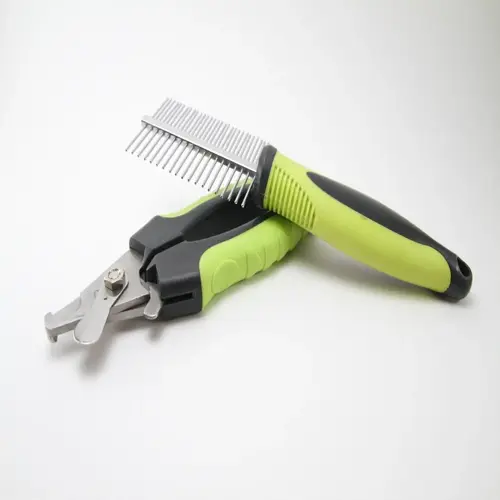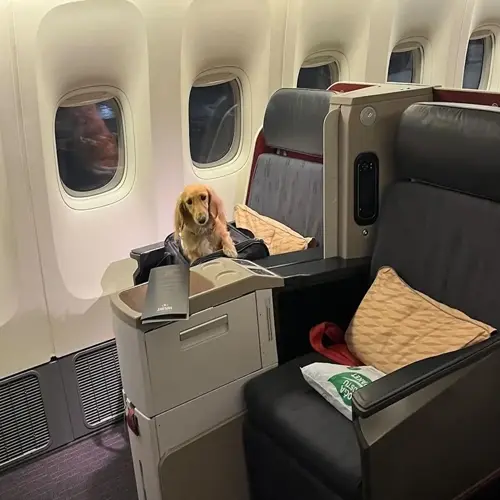Essential Pet Ownership Responsibilities Guide

Written by
Kailani Okoro
Reviewed by
Prof. Henry Webster, Ph.D.Owning a pet entails responsibilities that necessitate planning for the full costs of care throughout the pet's lifetime
Safety modifications to homes help prevent accidents and support pet-proofing@,
Daily care plans must establish the necessary routines to meet the physical and mental needs of the particular species
Health management includes regular veterinary, preventive health, and being prepared for emergencies
Legal considerations must be met for licensing, vaccination status, and local requirements
And finally, responsible ownership promotes the debunking of pet myths based on facts and science of pet care
Article Navigation
By welcoming pet care responsibilities into your life, you are given gifts of unconditional love and companionship. Those responsibilities last the entire life of your pet. I remember the day I rescued my dog and came to realize how the day-to-day choices I made contributed to her well-being. By the care with which one gives to their pet, that bond of longevity is created.
Pets are now included in over 67% of American households. This makes responsible care important for millions of them. True dedication is knowing their diet, safety, health needs, and legal aspects. My practice reveals that educated owners tend to have happier pets. Owner peace of mind comes from competence in these important responsibilities.
This guide is educational support, not judgment, to help you along your journey. Everyone starts somewhere. Learning is part of the process. I have helped many clients turn their worry into competence. The great thing is that you can start today to build a fulfilling partnership with your pet.
Financial Planning
Financial planning for pets means being aware of regular and unexpected expenses. For dogs, that average is about $1,500 per year, while the cost for cats is about $1,200. Exotic pets, such as reptiles, average above $2,000 per year because of habitat and specialized care. I know this from experience, when my parrot needed unexpected heating equipment.
Creating an emergency fund that sets aside three times the annual cost of your pet is crucial for maintaining peace of mind and financial security. Therefore, you should have a minimum of $4,500 saved for a dog. Additionally, pet insurance is a necessity for providing protection in case of emergencies, such as sudden surgery or illness, which can create a financial strain. You should write up a budget so that it is already in effect before the crunch comes.
Classify outlays into separate headings, such as fixed costs (e.g., food and medicine) and variable costs (e.g., grooming), and track each month's expenses through programs or spreadsheets. Each class has a budget to cover the increased needs of senior pets as they age. If you are prepared to face the inevitable problem logically, quality care need not suffer through life's inseparable issues.
Initial Setup
- Crates/carriers: $50-$150 (₡26,000-₡78,000)
- Bedding: $30-$100 annually (₡15,600-₡52,000)
- Grooming tools: $20-$80 (₡10,400-₡41,600)
- Habitat equipment: $100-$300 for tanks/enclosures (₡52,000-₡156,000)
- Initial vaccinations: $75-$200 per visit (₡39,000-₡104,000)
Ongoing Costs
- Training classes: $100-$300 per course (₡52,000-₡156,000)
- Boarding: $25-$85 per night (₡13,000-₡44,200)
- Replacement toys: $15-$50 monthly (₡7,800-₡26,000)
- License renewals: $10-$50 annually (₡5,200-₡26,000)
- Flea/tick prevention: $15-$40 monthly (₡7,800-₡20,800)
Unexpected Fees
- Emergency vet visits: $800-$3000 (₡416,000-₡1,560,000)
- Behavioral therapy: $70-$150 per session (₡36,400-₡78,000)
- Special diets: Double portion sizes, increasing costs by 100% (₡ equivalent: double base food price)
- Dental procedures: $500-$1200 for cleaning/extractions (₡260,000-₡624,000)
- Chronic condition management: $100-$400 monthly (₡52,000-₡208,000)
Seasonal Expenses
- Winter gear: $30-$100 for coats/boots (₡15,600-₡52,000)
- Summer cooling: $50-$150 for mats/pools (₡26,000-₡78,000)
- Allergy medications: $40-$90 monthly (₡20,800-₡46,800)
- Holiday boarding: 2x regular rates during peak seasons (₡26,000-₡88,400 per night)
- Gift expenses: $20-$75 for special occasions (₡10,400-₡39,000)
End-of-Life Care
- Palliative treatments: $200-$600 monthly (₡104,000-₡312,000)
- Mobility aids: $100-$400 for ramps/carts (₡52,000-₡208,000)
- Euthanasia services: $50-$300 (₡26,000-₡156,000)
- Aftercare options: $100-$500 for cremation/burial (₡52,000-₡260,000)
- Memorial items: $20-$100 for urns/keepsakes (₡10,400-₡52,000)
Savings Tracker
- Method: Establish dedicated savings by allocating ten percent of monthly household income specifically for pet expenses
- Benefit: Builds a substantial emergency reserve ranging from nine hundred to two thousand dollars within one calendar year timeframe
- Tip: Schedule automatic transfers immediately following each payday to guarantee consistent savings without manual effort
- Strategy: Maintain separate accounts for routine veterinary costs versus unexpected medical emergencies requiring immediate funds
- Tool: Access printable monthly budget sheets featuring visual progress indicators to maintain motivation throughout the process
- Outcome: Financial preparedness significantly reduces stress levels during unexpected veterinary emergencies and urgent situations
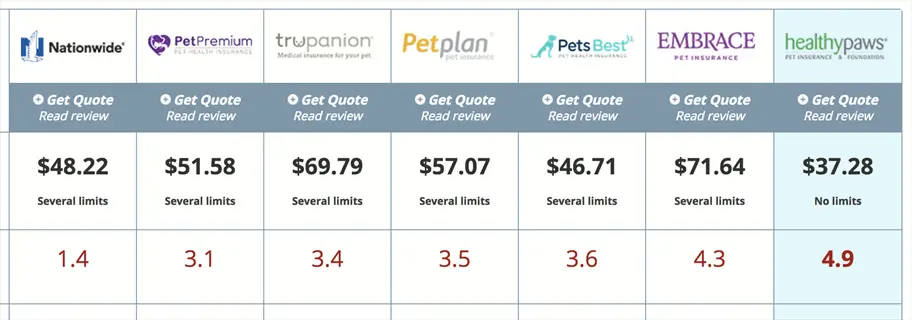
Cost Comparison Apps
- Feature: Utilize optical scanning technology to track receipts automatically across multiple spending categories effortlessly
- Benefit: Identifies potential savings between fifteen and thirty percent on recurring purchases for food and other supplies
- Platform: Functions effectively across both major mobile operating systems without compatibility issues or limitations
- Function: Receive timely price alerts about discounts on essential pet food items and necessary medications automatically
- Analysis: Generates comprehensive monthly reports highlighting unnecessary expenditures and potential savings opportunities
- Integration: Synchronizes directly with veterinary portals to monitor and anticipate upcoming appointment expenses proactively

Insurance Calculators
- Function: Customize coverage options specifically tailored to address breed-specific health concerns and requirements
- Benefit: Decreases unexpected veterinary expenses dramatically by sixty to ninety percent each calendar year
- Output: Provides detailed premium estimates based on selected deductible amounts and reimbursement percentage choices
- Comparison: Enables side-by-side evaluation of leading insurance providers and their respective policy benefits clearly
- Customization: Adjust parameters according to pet age, pre-existing medical conditions, and desired coverage limits
- Resource: Offers educational materials explaining policy terms thoroughly and claim submission procedures step-by-step

Expense Forecasting
- Approach: Predicts future financial requirements based on pet age progression and breed-specific health trend data
- Visualization: Displays interactive charts illustrating cost increases during senior life stages through graphical representation
- Accuracy: Adjusts financial projections using actual spending patterns combined with current economic inflation rates
- Scenario Planning: Models financial consequences of chronic medical conditions requiring ongoing treatment like diabetes
- Reminder System: Sends automatic notifications about approaching age-related care milestones and associated expenses
- Resource Library: Provides access to breed-specific health cost databases containing real-world expenditure examples

Subscription Management
- Convenience: Automates regular deliveries of essential items including food, treats, and preventative medications reliably
- Savings: Achieves average savings around fifteen percent compared to traditional retail store pricing structures
- Customization: Allows flexible adjustment of delivery frequency based on careful monitoring of consumption rates
- Variety: Features rotating toy selections designed to prevent pet boredom while effectively managing entertainment costs
- Synchronization: Coordinates delivery schedules precisely with medication refill requirements ensuring continuous supply
- Eco-Friendly: Minimizes packaging waste through consolidated shipments and sustainable material choices consistently

Rewards Programs
- Structure: Accumulates points through purchases that convert into tiered benefits and redemption opportunities
- Value: Delivers five to ten percent cashback equivalent value on all qualifying purchases made through the program
- Partnerships: Extends benefits through collaborations with veterinary clinics and professional service providers widely
- Exclusives: Grants early purchasing access to sales events and special promotions available only to enrolled members
- Digital Integration: Tracks points accumulation and redemption options through dedicated mobile applications conveniently
- Bonus Offers: Features double point earning opportunities during designated national pet awareness months annually
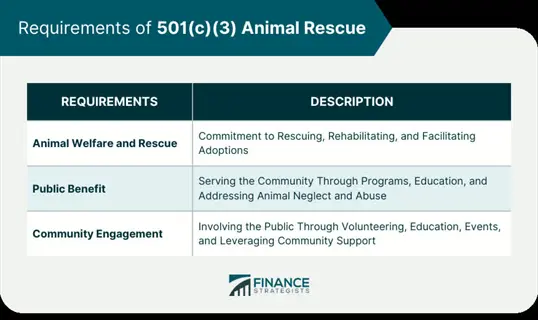
Tax Deduction Tools
- Eligibility: Identifies qualifying expenses for service animals and foster care situations meeting specific criteria
- Documentation: Organizes receipts systematically for medical treatments and specialized training cost deductions
- Guidance: Provides step-by-step instructions for claiming legitimate pet-related deductions accurately and legally
- Compliance: Updates automatically to reflect annual tax law modifications affecting pet owners and their filings
- Calculator: Estimates potential tax savings based on individual income brackets and documented animal care expenses
- Reminders: Delivers critical deadline alerts for required expense documentation submission avoiding late penalties
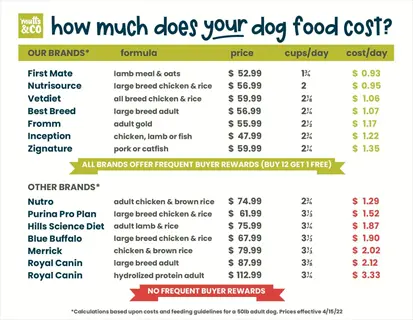
Price History Graphs
- Analysis: Monitors cost variations across major pet supply categories over extended historical time periods
- Trend Prediction: Identifies seasonal purchasing patterns to determine optimal timing for bulk buying decisions
- Comparison: Visualizes pricing differences clearly between online retailers and physical store locations effectively
- Alerts: Sends notifications immediately when favorite products reach their lowest recorded historical price points
- Customization: Creates personalized watchlists for monitoring specific brands or product types of particular interest
- Data Export: Allows downloading information in CSV format for integration with personal financial record keeping
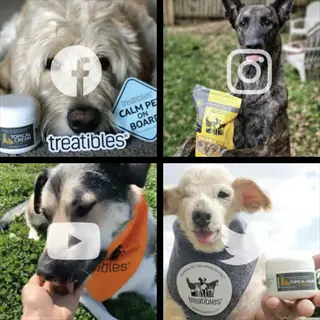
Community Exchanges
- Network: Connects local groups facilitating trades of unused items and service exchanges between verified members
- Economy: Establishes free pet sitting arrangements through reciprocal community partnerships and trust systems
- Sustainability: Promotes gently used equipment redistribution reducing environmental impact and landfill contributions
- Access: Provides specialized medical equipment loans supporting post-surgical recovery periods requiring assistance
- Verification: Implements member rating systems ensuring safe and reliable transactions within the exchange network
- Inclusivity: Develops programs supporting low-income pet owners with essential supplies through community donations

Financial Workshops
- Curriculum: Offers comprehensive courses covering fundamental pet-specific financial planning principles thoroughly
- Expertise: Features certified financial planners specializing exclusively in animal care economics and budgeting
- Format: Provides both live interactive sessions and recorded options accommodating different learning preferences
- Topics: Includes insurance comparisons, senior care funding strategies, and emergency preparation techniques
- Resources: Supplies downloadable workbooks containing practical budgeting templates and calculation tools
- Community: Creates networking opportunities connecting responsible pet owners across the country for shared support
Home Safety Setup
Securing a safe habitat begins with awareness of the specific risks associated with each species. Birds need protection from the blades of ceiling fans and fumes from non-stick pans. Reptiles require climate-controlled habitats in escape-proof cages. Cats are prone to window-fall hazards, while dogs may chew on hazardous objects. I have seen firsthand how the customization of living spaces can protect against injuries.
Balcony safety for apartment dwellers must come first, including barriers with less than 10 cm (4 inches) gaps. Blocking needs must be met through nets for pets and barriers along railings. Plexiglass supports must be installed for small pets. I have a neighbor with a cat that fell, but the measures saved the cat. All areas must be converted into secure areas.
Consult guides from veterinary poison control groups regarding poisonous plants such as lilies and the sago palms. Please either remove them altogether or display them. Put in plants that are not toxic to pets, like spider plants. I keep the ASPCA plant list bookmarked for reference. It is far better to be safe than to be sorry.
The use of anti-tip straps ensures furniture is anchored to walls. Resources for protecting electrical cords are available at a very low cost. Locker chemical supplies are in cabinets that lock. This provides a great deal of safety with a small step taken. It is important to measure the dimensions of the areas involved accurately, using both feet and meters simultaneously. Yes, here is where your vigilance comes in. Without a proper base, responsible care cannot exist.
Kitchen
- Secure trash cans with locking lids preventing scavenging
- Store knives in drawers with safety latches out of reach
- Use stove knob covers to prevent accidental burner activation
- Keep dishwasher closed when not in use to avoid entrapment
- Install cabinet locks on all cleaning supply storage areas
Living Room
- Anchor heavy furniture to walls preventing tip-overs
- Cover fireplace hearths with safety gates when in use
- Hide electrical cords behind furniture or use cord covers
- Remove small decor items that could be choking hazards
- Select pet-safe plants instead of toxic varieties like ivy
Bedroom
- Keep medications in locked containers on high shelves
- Secure loose bedding that could cause entanglement risks
- Store jewelry and hair ties in closed containers securely
- Check under beds for hazardous items before pet access
- Use nightlights to prevent tripping in dark areas
Bathroom
- Keep toilet lids closed to prevent drowning accidents
- Store razors and cosmetics in locked cabinets securely
- Use non-slip mats in tubs and showers preventing falls
- Unplug hair tools immediately after use avoiding burns
- Keep medications in high cabinets with safety latches
Outdoor Areas
- Fence yards completely with dig-proof barriers installed
- Remove toxic plants like azaleas and oleander completely
- Cover pools when not supervised to prevent accidents
- Store garden chemicals in locked sheds out of reach
- Provide shaded areas with fresh water during warm weather
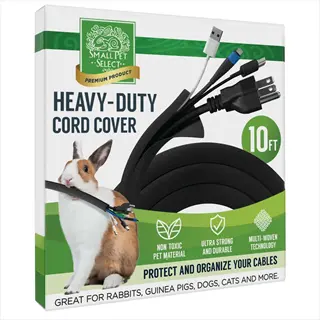
Cord Protectors
- Protection: Heavy-duty rubber covers preventing chewing damage to electrical wires significantly reducing electrocution risks for curious pets
- Installation: Simple snap-on design suitable for standard household cords requiring no special tools for quick setup completion
- Functionality: Creates effective barriers decreasing chewing incidents by over 90% based on veterinary safety observations
- Versatility: Available in multiple sizes accommodating various cord thicknesses and household configurations throughout the home
- Maintenance: Easy wipe-clean surface maintains appearance while ensuring long-lasting durability through regular household use
- Recommendation: Essential protective gear for homes with puppies, kittens, or pets exhibiting natural chewing behaviors
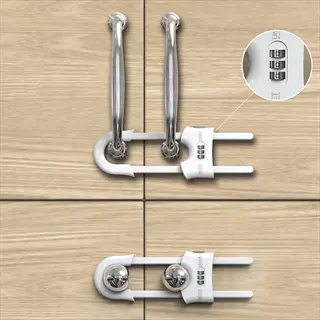
Cabinet Locks
- Security: Dual-action locking mechanisms requiring simultaneous pressure and slide motions preventing unauthorized access to contents
- Fit: Adjustable straps fitting cabinet handles spaced up to 3 inches (8 cm) apart accommodating most standard cabinet designs
- Installation: Adhesive backing or screw-mount options allowing permanent or temporary installation based on homeowner preferences
- Accessibility: Designed for adult operation while effectively restricting pet entry to hazardous chemical storage areas
- Durability: Engineered plastic construction withstands repeated pulling attempts by determined pets without damage or failure
- Placement: Critical safety devices for securing cleaning supplies, medications, and pantry items from pet access attempts
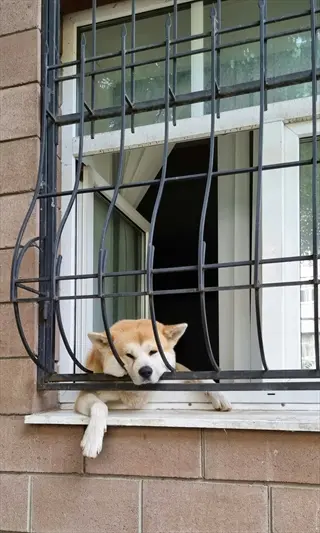
Window Stops
- Safety: Prevents windows from opening more than 4 inches (10 cm) effectively preventing accidental falls from elevated locations
- Design: Durable metal construction featuring adjustable width mechanisms fitting various window types securely without modification
- Installation: Tool-free mounting system requiring no permanent alterations to windows preserving existing structures and finishes
- Ventilation: Allows controlled fresh air circulation while maintaining complete safety standards throughout daily household usage
- Visibility: Low-profile transparent design maintaining window aesthetics without obstructing views or reducing natural light
- Application: Crucial protective equipment for apartments above ground level or homes with naturally curious feline companions
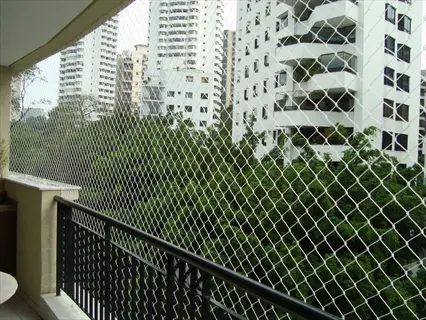
Balcony Nets
- Protection: UV-resistant polyethylene mesh creating physical barriers preventing falls from elevated outdoor living spaces
- Customization: Available in various colors and mesh densities matching home decor while providing essential safety assurance
- Installation: Professional mounting with stainless steel hardware ensuring secure long-term performance in various weather conditions
- Visibility: Transparent design preserving panoramic views while delivering critical fall prevention functionality for pets
- Durability: Engineered to withstand extreme temperatures ranging from freezing conditions to intense summer sunlight exposure
- Requirement: Recommended safety solution for all balconies above first floor level in households with companion animals
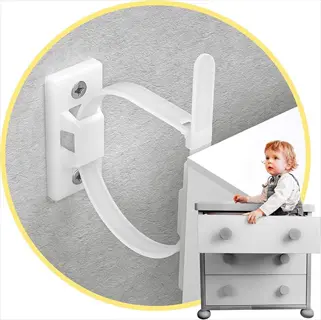
Furniture Anchors
- Stability: Steel cable systems securing furniture to wall studs preventing dangerous tip-over accidents during pet activities
- Flexibility: Telescoping design accommodating furniture heights ranging from 24 to 84 inches (61 to 213 cm) effectively
- Installation: Simple screw mounting process with clear instructions enabling quick setup completion within ten minutes typically
- Safety Benefit: Reduces furniture-related injuries significantly in homes with climbing cats or active large dog breeds
- Compatibility: Versatile application working with bookcases, dressers, entertainment centers, and various shelving units
- Priority: Essential safety measure providing peace of mind in households with vertically adventurous companion animals
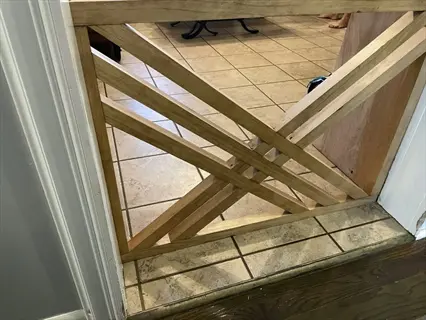
Pet Gates
- Barrier: Extendable pressure-mounted gates creating controlled safe zones without requiring permanent installation modifications
- Width: Adjustable design spanning from 28 to 56 inches (71 to 142 cm) accommodating most standard doorway openings
- Access: Includes integrated pet-sized passages allowing animal movement while restricting unsupervised child access effectively
- Materials: Sturdy metal construction incorporating chew-resistant plastic components ensuring long-term durability and security
- Versatility: Creates designated safe spaces for feeding areas, recovery zones, or hazard isolation requirements throughout homes
- Usage: Ideal separation solution for managing pet access to home offices, kitchens, or potentially dangerous staircases

Non-Slip Mats
- Safety: Suction cup technology creating secure footing on slippery surfaces preventing accidental slips and potential injuries
- Hygiene: Antimicrobial treatment inhibiting mold and mildew development maintaining clean and healthy bathing environments
- Comfort: Textured surface patterns massaging paws while providing reliable traction on wet or smooth flooring surfaces
- Size Options: Available in standard tub dimensions and custom-cut solutions for uniquely shaped bathing area configurations
- Maintenance: Machine washable materials preserving cleanliness and functional effectiveness through repeated household use
- Application: Critical safety accessories for bathrooms, pool surrounds, and tiled kitchen flooring areas throughout homes
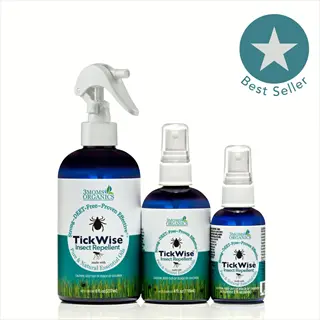
Bitter Sprays
- Prevention: Food-grade bitter formulations discouraging destructive chewing behaviors on furniture and electrical wiring
- Application: Direct spray application onto target surfaces requiring reapplication every 48 to 72 hours for effectiveness
- Safety: Non-toxic composition harmless through incidental ingestion while creating strong behavioral aversion responses
- Success Rate: High reduction in destructive chewing habits among teething puppies and pets exhibiting anxiety symptoms
- Versatility: Effective on multiple surfaces including wood, fabric, plastic, and electrical cord exterior coverings
- Training Utility: Valuable behavior modification tool during developmental phases or for pets with chewing tendencies

Corner Guards
- Protection: Soft silicone covers cushioning sharp furniture edges reducing impact injuries during active play sessions
- Installation: Self-adhesive backing securing firmly to furniture surfaces without causing damage or leaving residues
- Safety Benefit: Prevents eye injuries and head trauma incidents occurring during energetic running or chasing games
- Design Options: Clear or color-matched selections maintaining furniture aesthetics while providing essential protection
- Durability: Engineered to withstand repeated impacts without tearing or losing adhesive properties over extended periods
- Placement: Recommended safety enhancements for coffee tables, entertainment centers, and counter edge locations
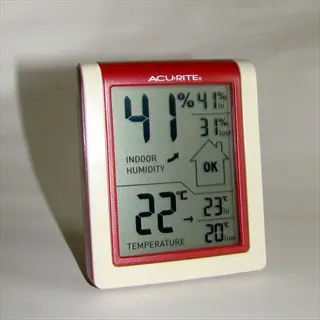
Temperature Monitors
- Monitoring: Digital displays showing current temperature and humidity levels maintaining optimal environmental conditions
- Safety Alerts: Notification systems activating when temperatures exceed safe ranges for specific companion animal species
- Comfort Range: Maintains ideal conditions between 68 to 75°F (20 to 24°C) for most common household pet species
- Connectivity: Smartphone integration delivering real-time alerts during dangerous temperature fluctuations or extremes
- Data Tracking: 24-hour history logs identifying unsafe environmental patterns requiring immediate homeowner intervention
- Placement: Essential monitoring equipment for reptile habitats, small animal enclosures, and sun-exposed living areas
Daily Care Routine
For pets to be healthy, their schedules must be adjusted according to their species. Dogs require consistent walking and training. Cats require climbing places and motivation to play, such as engaging in interactive activities like catching things. To stimulate exploration time, small mammals require places to explore. The schedule for my rabbit is adjusted according to its energy levels. Water should be monitored by measuring skin elasticity and intake.
Offer dogs fresh water daily at the rate of 1 oz per lb. (30 cc per kg) of body weight. Cats require several water stations in the house, and some prefer their water from running fountains. Small mammals require 10% of their body weight in water per day. My cat's use of a fountain for her water increased her intake remarkably. Water bowls should be checked twice daily.
Emphasize mental activity with puzzle feeders for dogs, treat balls for cats, and foraging toys for small animals. Rotating toys weekly keeps them interesting. I set aside 20 minutes each day for interactive play with my pets. This helps avoid boredom and destructive behaviors while enhancing your bond.
To measure food portions accurately, scales should be used that measure in both ounces and grams. Dogs tend to eat twice daily, while cats prefer several small meals. Small mammals need continual access to hay. Feedings can be combined with training practices to provide mental exercise. I have noticed that my dog has been behaving much better since I made his meal times more interesting.
Morning Routine
- Fresh water replacement in all bowls (minimum 1 cup per 5 lbs/2.3 kg body weight)
- Measured feeding according to veterinary guidelines
- 5-minute health check: eyes/ears/nose inspection
- Potty break or litter box cleaning
- 15-minute play session with interactive toys
- Medication administration if prescribed
- Environmental temperature verification
Afternoon Care
- Water refreshment and bowl cleaning
- 30-minute exercise: walks for dogs, climbing for cats
- Mental stimulation: puzzle feeders or training exercises
- Grooming: brushing or spot cleaning as needed
- Hydration check: skin tent test for dehydration
- Treat distribution for positive reinforcement
- Socialization time with family members
Evening Routine
- Final measured feeding according to daily calorie needs
- Litter box scooping or final potty break
- 10-minute bonding activity: petting or gentle massage
- Environment preparation: bed arrangement, temperature check
- Safety inspection: hazard sweep before bedtime
- Dental hygiene: tooth brushing or dental wipes
- Calming activities to reduce nighttime anxiety
Overnight Considerations
- Access to fresh water at all times
- Comfortable sleeping area temperature control
- Safe confinement if required for medical reasons
- Nightlight provision for senior pets with vision issues
- Emergency contact information visibly posted
- Medication reminders for overnight doses
- Quiet environment minimizing sleep disruptions
Special Needs Accommodations
- Physical therapy exercises for mobility-impaired pets
- Blind pet navigation paths with scent markers
- Anxiety reduction protocols for noise-sensitive pets
- Diabetic pet glucose monitoring schedules
- Post-surgical care: wound checks and limited activity
- Puppy/kitten socialization exposure sessions
- Senior pet cognitive enrichment activities
Extended Activities
- 90-minute adventure walks or hiking for dogs
- Novel enrichment: cardboard castles for cats
- Habitat deep cleaning for caged pets
- Socialization outings to pet-friendly locations
- Training reinforcement sessions
- Swimming sessions for water-loving breeds
- Agility course setup and practice
Health Maintenance
- Full body inspection for lumps/ticks/injuries
- Nail trimming if needed (1-2mm/0.04-0.08 inches past quick)
- Dental care: brushing or dental treats
- Weight check and recording
- Environmental enrichment rotation
- Ear cleaning with veterinarian-approved solutions
- Anal gland expression if required
Nutrition Management
- Dietary assessment and portion adjustment
- Homemade treat preparation using safe ingredients
- Food puzzle creation for mental stimulation
- Supplement inventory and replenishment
- Fresh food introduction trials
- Hydration enhancement with broth ice cubes
- Allergy monitoring for new foods
Environment Optimization
- Bedding replacement and sanitization
- Toy rotation to maintain novelty and interest
- Safety equipment checks and repairs
- Temperature zone verification throughout home
- Odor control system maintenance
- Hazard reevaluation and mitigation
- Rest area comfort upgrades
Behavioral Observation
- Stress signal monitoring and documentation
- Interaction quality assessment with family
- Response to new stimuli evaluation
- Training progress tracking
- Socialization gap identification
- Anxiety trigger mapping
- Enrichment effectiveness measurement
Health Management
Preventive care is the foundation of your pet's health care. Dogs require annual vaccinations and heartworm preventive medicine, and cats need regular dental check-ups. Exotic animals, such as reptiles, need UVB light and humidity control. All senior pets can benefit from a visit to a veterinarian at least twice yearly. Early detection can prevent the need for expensive treatment later.
Accurately monitor weight using scales that show both pounds and kilograms. Senior pets often require reductions in their calorie intake while still requiring protein. For dogs over the age of seven, increase the frequency of examinations to detect signs of arthritis at an early stage. Cats exhibit slightly different signs of kidney problems, such as increased water consumption. I pay particular attention to the habits of my senior cat.
Temperature management is vital for exotics. Turtles require basking spots at 85-95°F (29-35°C) plus cooler zones. Small fur-bearing mammals should be kept during the day at 65-75°F (18-24°C). Check the heating equipment daily with digital thermometers. My lizard's health improved considerably after I made adjustments to his thermal gradient.
Year-round parasite prevention can be made more effective by using species-appropriate products. Dogs require monthly tick treatments; indoor cats, for example, still need flea products. Correct dosing of medications can be accurately made using milliliter syringes. Preventive care is far less costly than treating advanced illnesses. Set up calendars to remind you of treatments to keep them on schedule.
Daily Monitoring
- Appetite and water consumption tracking
- Elimination pattern and stool quality observation
- Energy level and behavioral changes documentation
- Coat and skin condition inspection
- Mobility assessment for stiffness or limping
Weekly Checks
- Weight measurement and trend analysis
- Dental examination for plaque or gingivitis
- Ear inspection for odor or discharge
- Nail length assessment and maintenance
- Environmental hazard reevaluation
Monthly Procedures
- Parasite prevention application
- Full body palpation for lumps or swelling
- Eye health assessment for cloudiness or discharge
- Joint flexibility testing especially in seniors
- Preventive supplement replenishment
Semi-Annual Care
- Veterinary wellness examination
- Vaccination updates based on lifestyle risk
- Blood work for senior pets (7+ years/84+ months)
- Dental scaling if required
- Dietary review and adjustment
Annual Requirements
- Comprehensive blood panel including thyroid
- Urinalysis for kidney function assessment
- Imaging for breed-specific conditions
- Immunity level testing where appropriate
- Chronic condition management plan update
Preparation Essentials
- 24-hour emergency clinic contact information
- Pet first aid kit with vet-approved contents
- Digital access to medical records
- Transport carrier ready near exit
- Emergency funds allocation
Critical Symptoms
- Difficulty breathing or blue gums
- Uncontrolled bleeding or trauma
- Seizures lasting over 2 minutes (120 seconds)
- Loss of consciousness
- Bloated abdomen with retching
Immediate Response Steps
- Assess airway and breathing
- Control bleeding with direct pressure
- Prevent self-injury during seizures
- Position recovery position if unconscious
- Avoid oral intake if vomiting
Veterinary Communication
- Describe symptoms with time of onset
- Note vital signs if measurable
- Provide medical history highlights
- Mention recent food/treat intake
- Report all medications and supplements
Follow-Up Care
- Medication administration schedule
- Activity restriction guidelines
- Wound care and monitoring
- Nutritional support protocols
- Behavioral observation parameters
Legal Responsibilities
The variations in legal responsibilities are environment-dependent. For instance, leash laws in California require all pets to be restrained on 6-foot leads, whereas in New York, they are only required to be on leash in city parks, except in certain areas. Service animal requirements have different definitions at the national and local levels. It is best to familiarize yourself with all local and State laws about the care of animals.
Certification for service animals necessitates supportive proof of training due to a disability. Access rights differ for emotional support animals compared to trained service animals. Airlines and housing providers request specific documentation. I assisted clients with these requests using the ADA requirements for appropriate accommodations as a base.
Regulations for waste disposal require immediate clean-up with biodegradable bags in most urban areas. Fines reach $250 for violations in cities such as San Francisco. Always carry disposable bags on walks, and measure distances away from public spaces when necessary. Proper methods of waste disposal prevent the spread of disease and disputes with neighbors.
Breed restrictions often mean special containment types, such as yards with fences that are 6 feet (1.8 meters) high or higher, in some areas. License fees can range from $15 to $35 per animal per year, depending on where you live. Keep records of rabies vaccinations. Update any microchip registrations when pets move. Proactive compliance assures the safety of pets and the community.
Identification Requirements
- Microchipping with current registry information
- Collar tags with owner contact details
- Rabies vaccination tags displayed
- Breed-specific licensing where applicable
- Service animal identification vest
Confinement Regulations
- Secure fencing at least 6 feet (1.8 meters) high
- Leash laws in public areas (max 6 feet/1.8m)
- Vehicle restraint systems during transport
- Prohibited tethering duration limits
- Indoor containment requirements
Public Conduct Rules
- Waste disposal with biodegradable bags
- Noise control ordinances (barking limits)
- Prohibited areas: playgrounds, restaurants
- Aggression management protocols
- Service animal access rights
Healthcare Mandates
- Rabies vaccination schedules
- Spay/neuter requirements in some jurisdictions
- Health certificate for interstate travel
- Quarantine protocols for bites
- Reporting of zoonotic diseases
Breed-Specific Legislation
- Registration of restricted breeds
- Mandatory liability insurance ($100,000+)
- Muzzle requirements in public
- Special enclosure specifications
- Behavioral evaluation certifications
Proof of Ownership
- Adoption papers or bill of sale
- Microchip registration certificate
- Veterinary treatment records
- Pedigree documentation
- City/county license certificate
Vaccination Records
- Rabies certificate with expiration date
- DHPP/FVRCP vaccination history
- Bordetella and leptospirosis records
- Immunity level test results where applicable
- International health certificates
Insurance Documentation
- Liability policy ($100,000+ coverage)
- Breed-specific risk riders
- Service animal coverage addendums
- Rental property damage coverage
- Emergency medical coverage
Travel Documentation
- Airline health certificates
- International import permits
- Rabies immunity level test results
- Microchip ISO compliance proof
- Destination-specific requirements
Legal Agreements
- Pet deposit agreements for rentals
- Veterinary care authorization forms
- Pet trust documents
- Service animal access agreements
- Breed-specific compliance contracts
5 Common Myths
Pets naturally self-regulate their food intake and stop eating when full, requiring no portion control from owners.
Most domestic animals lack natural portion regulation due to selective breeding, leading to obesity in 60% of pets when free-fed. This causes diabetes, joint damage, and shortened lifespans requiring veterinary intervention. Responsible owners must measure meals using scales (grams/ounces) according to weight management guidelines from the American Veterinary Medical Association.
Indoor cats and dogs living exclusively inside homes are completely protected from infectious diseases and do not require vaccinations.
Airborne viruses like panleukopenia survive on surfaces for years, entering homes via shoes or clothing while rabies exposure occurs through bats or rodents. Unvaccinated pets risk deadly outbreaks including parvovirus that kills 90% of infected puppies. Core vaccinations create herd immunity protecting entire communities, with legal mandates in all US jurisdictions requiring rabies immunization regardless of lifestyle.
Dogs show guilty looks like avoiding eye contact or curling up to appear small because they know when they are in moral violation.
Studies on behavior in dogs have confirmed that these reactions are due to the stresses of an angry owner and are not manifestly due to moral understanding. The "guilty look" appears prior to any wrongdoing when owners suspect wrongdoing and therefore confirms that they are reactions to stress. Dogs cannot be reformed for wrongdoing because behavior training teaches that they associate punishment only with their immediate situations and have no association with previous actions in life according to accredited animal behaviorists.
Cats always land safely on their feet during falls due to an infallible righting reflex preventing serious injuries regardless of height.
The righting reflex requires minimum 12 feet (3.6 meters) to activate, making short falls under two stories (approximately 6 meters) particularly dangerous with high fracture rates. Above seven stories (approximately 21 meters), impact velocity causes 'high-rise syndrome' with 90% mortality from shattered jaws and internal trauma. Window screens and balcony nets are essential safety measures disproving this lethal misconception.
Animals adopted from shelters have more behavioral issues than pets acquired from breeders due to previous trauma or inherent issues.
Animals in shelters undergo thorough behavioral evaluations before adoption, whereas 30% of animals acquired from breeders have behavioral issues due to poor socialization. Research in peer reviewed journals shows adopted animals have the same amount of obedience after an adjustment period, and many of the animals available for adoption initially were given up due to owner-related issues such as loss of housing. More reputable breeders represent less than 20% of the sources of obtaining pets, which makes it statistically safer to adopt from shelters, according to ASPCA data.
Conclusion
Embracing the responsibilities of pet ownership means committing to your animal companion throughout their life. This journey demands daily diligence across all parameters of care. Your efforts with your pet, however small, form an unbreakable bond of trust and understanding between you both that will last throughout all life stages together.
Identify your core values related to preventive health, safe environments for your pets, routines tailored to each species, and legal compliance, among others. These interrelated responsibilities can be woven together into a true caretaking philosophy. You realize that ownership becomes a creative partnership based on respect for each other's welfare when commitment is present.
Continue to expand your information bank by means of reading animal behavior books and vet literature. Education is an ongoing thing that occurs during the life of your pets. I have been in practice so long that I am still learning after many years of experience. The process of learning is gratifying in that it honors the trust that your pet places in you as a steward for it.
Start your implementation of an improvement in your caregiver attitude today. Small changes, if done consistently, can create great results over time. Your individual application will mean everything in making a life together a satisfying one. This sense of application brings to you the true meaning of a real and responsible guardian.
External Sources
Frequently Asked Questions
What responsibilities does a pet owner have?
Pet ownership responsibilities encompass comprehensive financial planning for lifelong care, daily health monitoring, safe environment modifications, legal compliance with local regulations, species-specific nutrition management, and continuous education about animal welfare best practices throughout their lifetime.
How to be a responsible pet parent?
Responsible pet parenting requires establishing consistent routines for:
- Species-appropriate exercise and mental stimulation activities
- Preventive veterinary care including vaccinations and checkups
- Safe home environment free of common hazards
- Financial planning for unexpected medical expenses
- Legal compliance with licensing and local ordinances
Why is pet ownership considered a major commitment?
Pet ownership demands significant long-term dedication because animals require consistent daily care, specialized medical attention throughout their lifespan, substantial financial resources for proper nutrition and healthcare, environmental safety adaptations, and ongoing emotional engagement to ensure their physical and psychological wellbeing.
What makes pet ownership ethical?
Ethical pet ownership requires fulfilling all physical and psychological needs including:
- Providing species-appropriate living conditions and socialization
- Ensuring preventive and emergency medical care
- Respecting natural behaviors through enrichment activities
- Committing to the animal's entire lifespan
- Adhering to legal requirements and community standards
What are signs of irresponsible pet ownership?
Irresponsible ownership manifests through inadequate veterinary care, poor living conditions, lack of proper nutrition, insufficient socialization opportunities, failure to address behavioral issues, disregard for legal requirements like licensing, and absence of financial planning for essential care needs.
How do you demonstrate legal pet ownership?
Legal pet ownership documentation includes:
- Current licensing and registration certificates
- Microchip implantation records with updated contact details
- Veterinary vaccination and medical history documents
- Adoption or purchase agreements with transfer records
- Breed-specific permits where legally required
What distinguishes pet parents from owners?
While both provide care, pet parents embrace a guardian mindset focused on emotional bonds and holistic wellbeing, whereas owners may prioritize basic maintenance. True responsibility combines both perspectives through comprehensive physical care, emotional connection, and lifelong commitment to the animal's best interests.
Why is financial planning essential for pets?
Financial planning prevents crisis situations by ensuring resources exist for:
- Routine veterinary care and preventive treatments
- Emergency medical interventions for unexpected illnesses
- Species-appropriate nutrition and dietary requirements
- Safety equipment and environmental modifications
- End-of-life care and related expenses
How does pet ownership teach responsibility?
Caring for animals develops responsibility through daily feeding schedules, health monitoring routines, environmental maintenance requirements, financial budgeting for care expenses, emotional commitment to another being's wellbeing, and continuous learning about species-specific needs throughout their lifespan.
What constitutes a complete home safety setup?
Comprehensive pet safety requires:
- Secure containment systems preventing escapes
- Hazard removal including toxic plants and chemicals
- Species-appropriate environmental enrichments
- Emergency preparedness kits and protocols
- Temperature monitoring in living areas
- Physical modifications preventing falls and injuries
